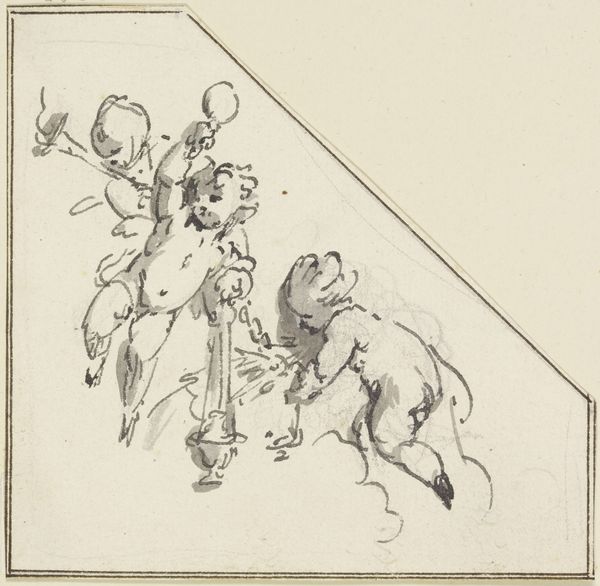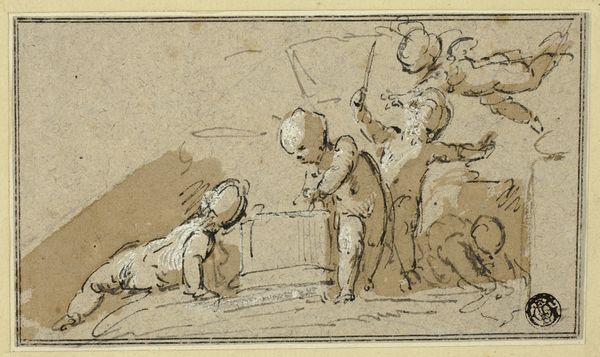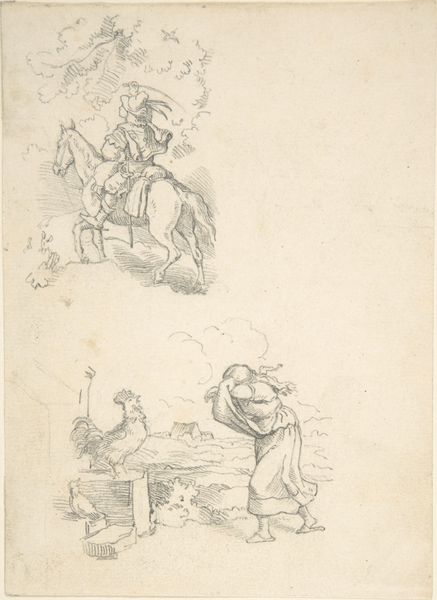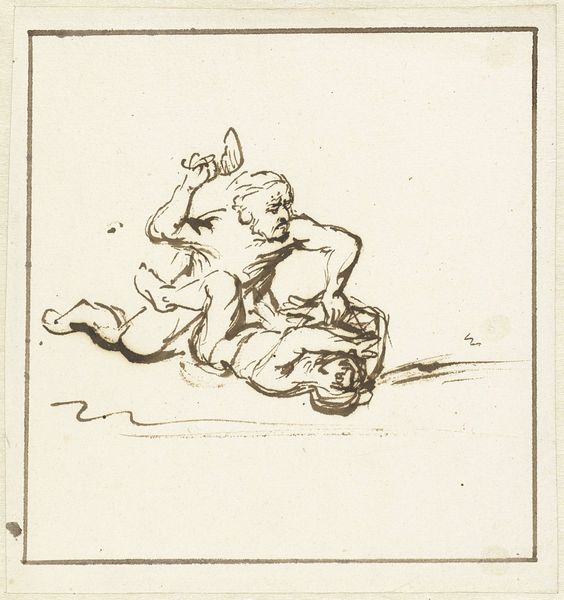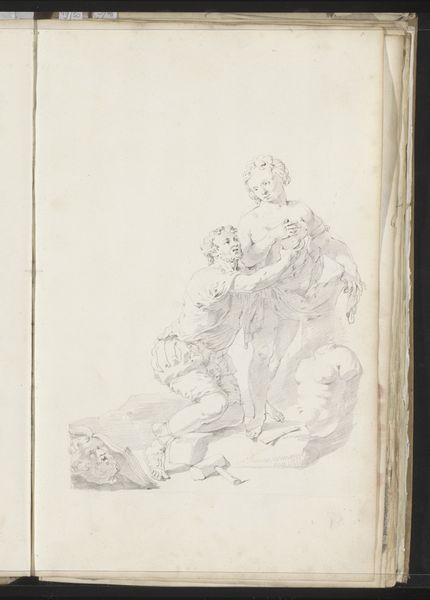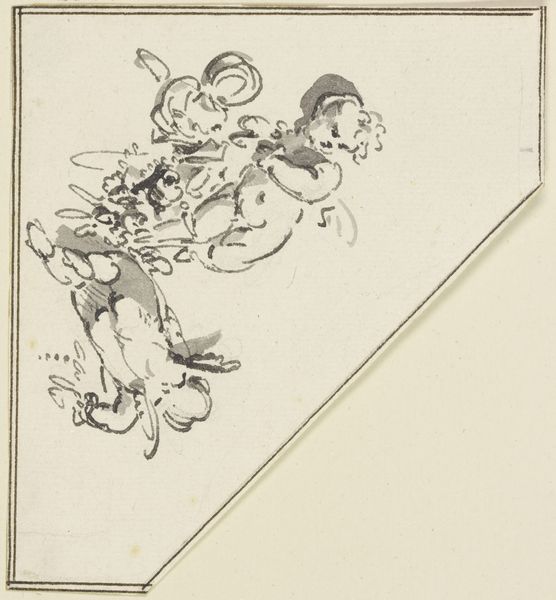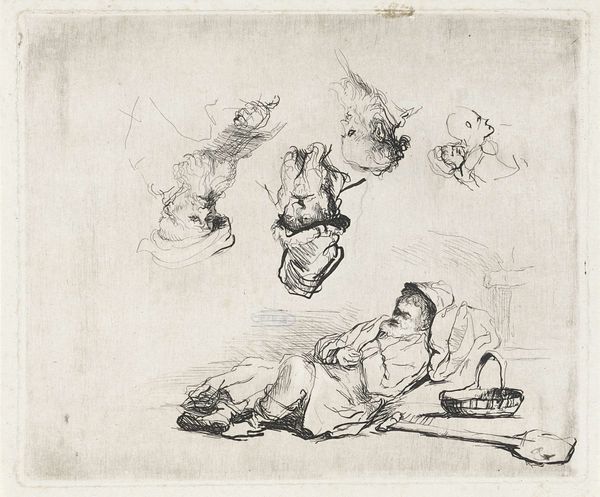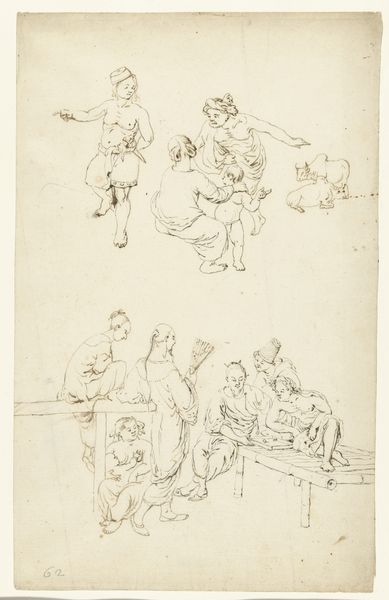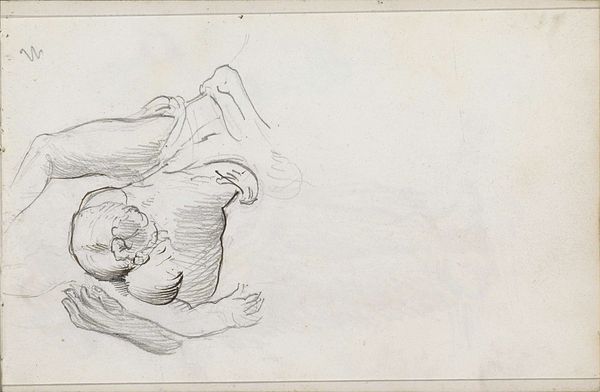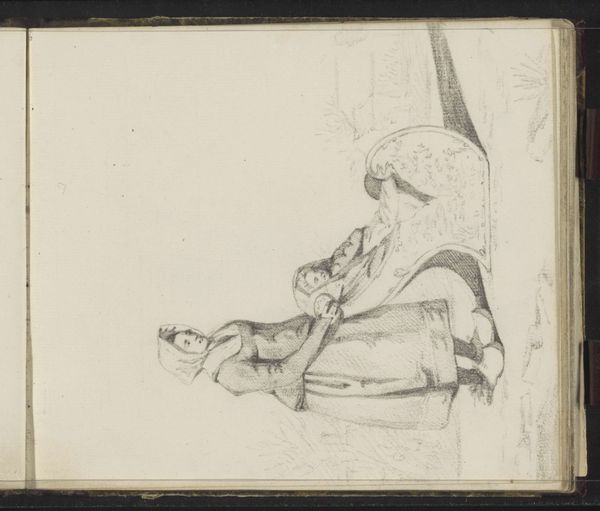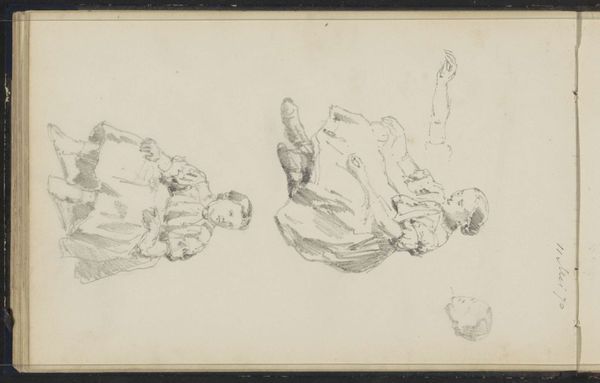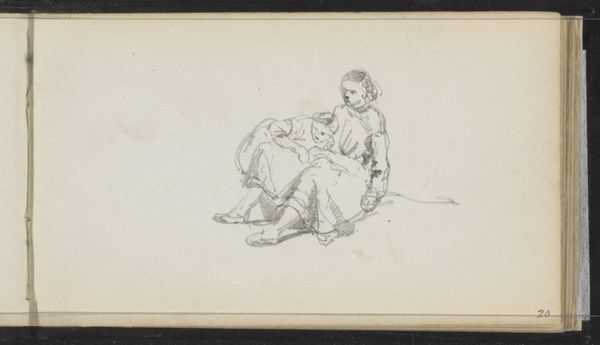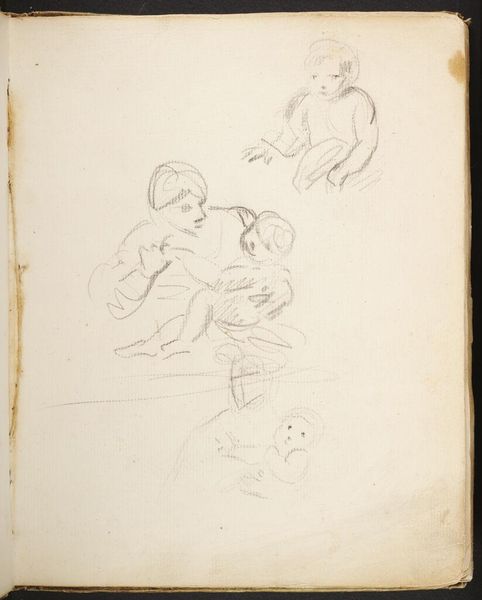
drawing, ink, indian-ink, chalk
#
drawing
#
netherlandish
#
light pencil work
#
quirky sketch
#
allegory
#
baroque
#
figuration
#
personal sketchbook
#
ink
#
idea generation sketch
#
sketchwork
#
ink drawing experimentation
#
sketch
#
indian-ink
#
pen-ink sketch
#
chalk
#
15_18th-century
#
sketchbook drawing
#
storyboard and sketchbook work
#
sketchbook art
Copyright: Public Domain
Curator: Here we have "Schwebende und spielende Amoretten", or "Floating and Playing Cupids", an Indian ink, chalk, and pencil drawing by Jacob de Wit, currently residing at the Städel Museum. What's your initial reaction to this one? Editor: Oh, delightful! It feels like a quick sketch, perhaps a playful idea jotted down in a personal sketchbook. It exudes a certain Baroque charm, light and airy. Curator: Indeed. The artist seems interested in allegorical depictions, particularly how light plays across the forms. Considering the timeframe, it would be valuable to analyze the quality of the inks and chalks. Also the support paper. How available was this at the time? The consumption of art material impacts the artistic workflow itself! Editor: You're absolutely right. The raw materials dictate possibilities. I’m captivated by the sketchwork, the seeming spontaneity in those light pencil lines. Do you think the ink might be applied over an under-drawing in chalk? The use of chalk to structure then ink to define, that seems plausible! Curator: The presence of both chalk and ink certainly presents a dialogue between base and surface, between the structural and decorative aspects of production. Given his Netherlandish background, we might compare it with other sketches emerging from the Antwerp school to understand influences in the handling of ink. Editor: I wonder if the somewhat frenetic energy of the strokes is a clue as to his personality, as well as this being just a practical experiment. Imagine De Wit swiftly capturing fleeting thoughts on paper. It almost looks as though, in my mind at least, that these cupids are literally dancing off the page! Curator: It's precisely that tension between intention and the physical limitations, that lends itself to broader societal interpretations within workshops and their local economies. Considering how the division of labor shapes artistic output helps to unpack this drawing further. Editor: This really does speak to an exploratory process where each decision reflects those socio-economic circumstances. So the materials here, in my view, become crucial, far more than the figures themselves perhaps! Curator: Exactly, in doing so, we may understand how De Wit himself participates in and reflects these circumstances through material selection and application. Editor: Beautiful. The sketch reveals process. What a fabulous idea!
Comments
No comments
Be the first to comment and join the conversation on the ultimate creative platform.
